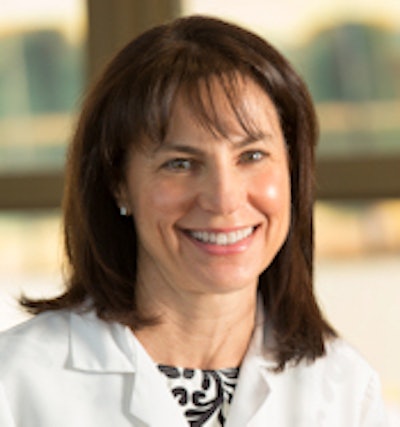
In addition to finding breast cancer earlier and thus reducing mortality rates, screening mammography for women ages 40 to 49 reduces their need for chemotherapy and their exposure to its risks, according to a new study published in the American Journal of Roentgenology.
The idea for the research was sparked by the revised 2009 recommendations on screening mammography from the U.S. Preventive Services Task Force (USPSTF), according to lead author Dr. Donna Plecha of University Hospitals Case Medical Center in Cleveland.
Previous research conducted by the group in women 40 to 49 years of age who were diagnosed with breast cancer after screening mammography found that the women presented with earlier-stage disease and smaller tumors than those who weren't screened. The group decided to follow up that research by investigating other possible benefits of screening mammography -- benefits that may have been overlooked by USPSTF.
Plecha and colleagues focused on differences in treatment recommendations, stage at diagnosis, and identification of high-risk lesions for women 40 to 49 years old undergoing screening mammography, compared with women with a symptom that required diagnostic evaluation (AJR, February 2014, Vol. 202:2, pp. 282-288).
 Dr. Donna Plecha of University Hospitals Case Medical Center.
Dr. Donna Plecha of University Hospitals Case Medical Center.
The group reviewed pathology results of 1,004 image-guided biopsies performed in women ages 40 to 49 at three breast centers at University Hospitals Case Medical Center between January 2008 and December 2011. The researchers recorded the reason for presentation, pathology, tumor size, stage, receptor characteristics, and treatment for women diagnosed with a high-risk lesion or breast cancer.
Of 230 breast cancers, 149 (65%) were found in women who had screening mammography and 81 (35%) were found in the symptomatic group. The mean age for both groups was 45.
Women who underwent mammography for diagnosis of symptoms rather than breast cancer screening were more likely to have chemotherapy. Of the high-risk lesions identified, 81% were diagnosed in patients who had screening mammography, and these patients were more likely to be diagnosed at earlier stages and to have smaller tumors, Plecha's group found.
Ductal carcinoma in situ (DCIS) was diagnosed in 23% of patients, while 77% were diagnosed with invasive cancers; patients who had screening mammography were more likely to be diagnosed with DCIS than those who received diagnostic imaging, the authors wrote.
"The five-year relative survival rate of stage I breast cancer is estimated to be about 100%," they wrote. "This is in contrast to the five-year relative survival rates for stage II, III, and IV cancer of 86.2%, 57.2%, and 19.9%."
Although Plecha and colleagues did not find a statistically significant difference in the percentage of patients receiving radiation therapy between the screened and unscreened women, there was a higher rate of mastectomies in women who received mammography for diagnosis of symptoms than in those who had screening (48% versus 30%).
Also, among the women who had mastectomies, there was a higher rate of postmastectomy radiation for unscreened versus screened women (49% compared with 27%). There also was a higher rate of chemotherapy treatment among unscreened women than in screened women (66% versus 44%).
"There have been many studies looking at this age group and the pros and cons of screening, but not as many asking the question of what's the impact of finding high-risk lesions sooner rather than later," Plecha told AuntMinnie.com. "We don't necessarily screen to look for high-risk lesions -- we screen to find cancer earlier -- but one of the benefits of early screening is finding patients who are high risk."
Finding breast cancer at an earlier stage also leads to less-toxic and better-tolerated treatments -- as well as the chance to be proactive in breast cancer prevention, Plecha and colleagues concluded.
"Detecting high-risk lesions is another benefit of screening mammography, which may lead to chemoprevention, decreasing the risk of future breast cancers," they wrote. "Patients diagnosed with high-risk lesions may also benefit from screening with MRI to detect subsequent mammographically occult breast cancer."




















